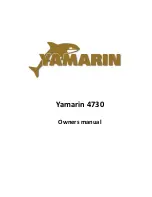
52
Steering
Turning the handlebar pivots the jet
pump nozzle which controls the water-
craft direction. Turning the handlebar to
the right will turn the watercraft to the
right and inversely. The throttle should
be applied to turn the watercraft.
Unlike a car, a watercraft needs some
throttle to turn. Practice in a safe area
applying the throttle and turning away
from an imaginary object. This is a
good collision avoidance technique.
The watercraft behaves differently with
a passenger and requires greater skill.
The passenger should always grip the
seat strap or grab handle. Reduce
speed and avoid sharp turns. Avoid
choppy water conditions when carrying
a passenger.
Off-Power Assisted Steering
System (O.P.A.S.)
The Off-Power Assisted Steering (O.P.A.S.)
system uses a dual side vanes design
that assists the watercraft steering in de-
celeration, to redirect watercraft path
when steering is turned after throttle has
been released or engine stopped.
The side vanes on the rear sides of the
hull, turn as the steering is turned to
assist the watercraft turning. At first,
carefully experiment turning with this
system.
1. Side vanes turn following steering
movement
When engine is running at approximate-
ly 75% or more RPM, the side vanes are
automatically raised to upper position
since they are not required at that vehi-
cle speed range.
Between 30% and 75% engine RPM,
side vanes are gradually raised from
lower position to upper position.
WARNING
Shift lever should only be used when
the engine is idling and watercraft is
completely stopped. Do not use re-
verse to stop the watercraft.
WARNING
Throttle should be applied and
handlebar turned to change the di-
rection of the watercraft. Steering
efficiency will differ depending on
the number of passengers, load,
water conditions and environmen-
tal factors such as the wind.
WARNING
Directional control is reduced when
the throttle is released and/or when
engine is off.
F18J09Y
1
F18K03Y
1
smo2002-003_a.book Page 52 Friday, October 12, 2001 2:04 PM
















































